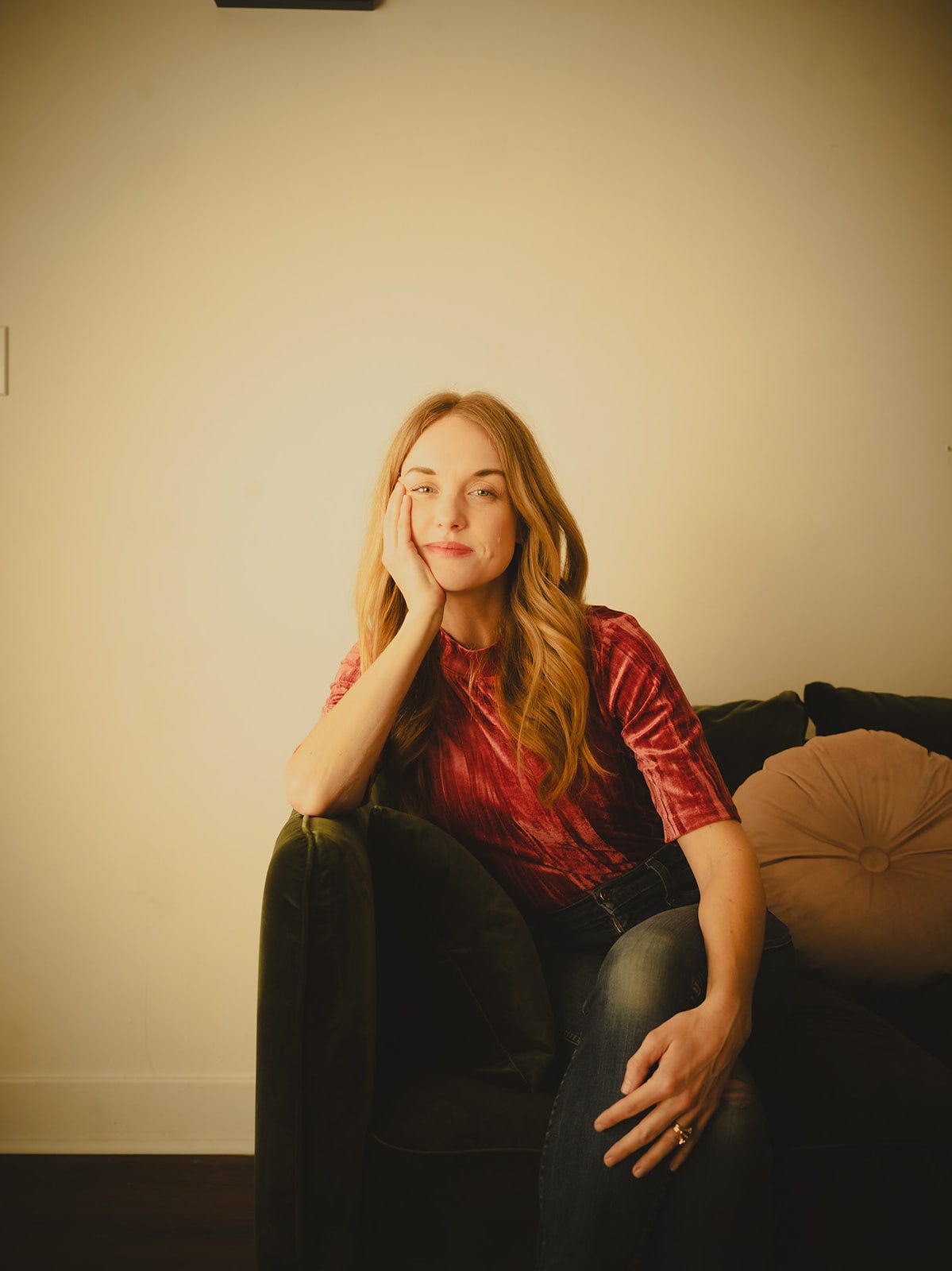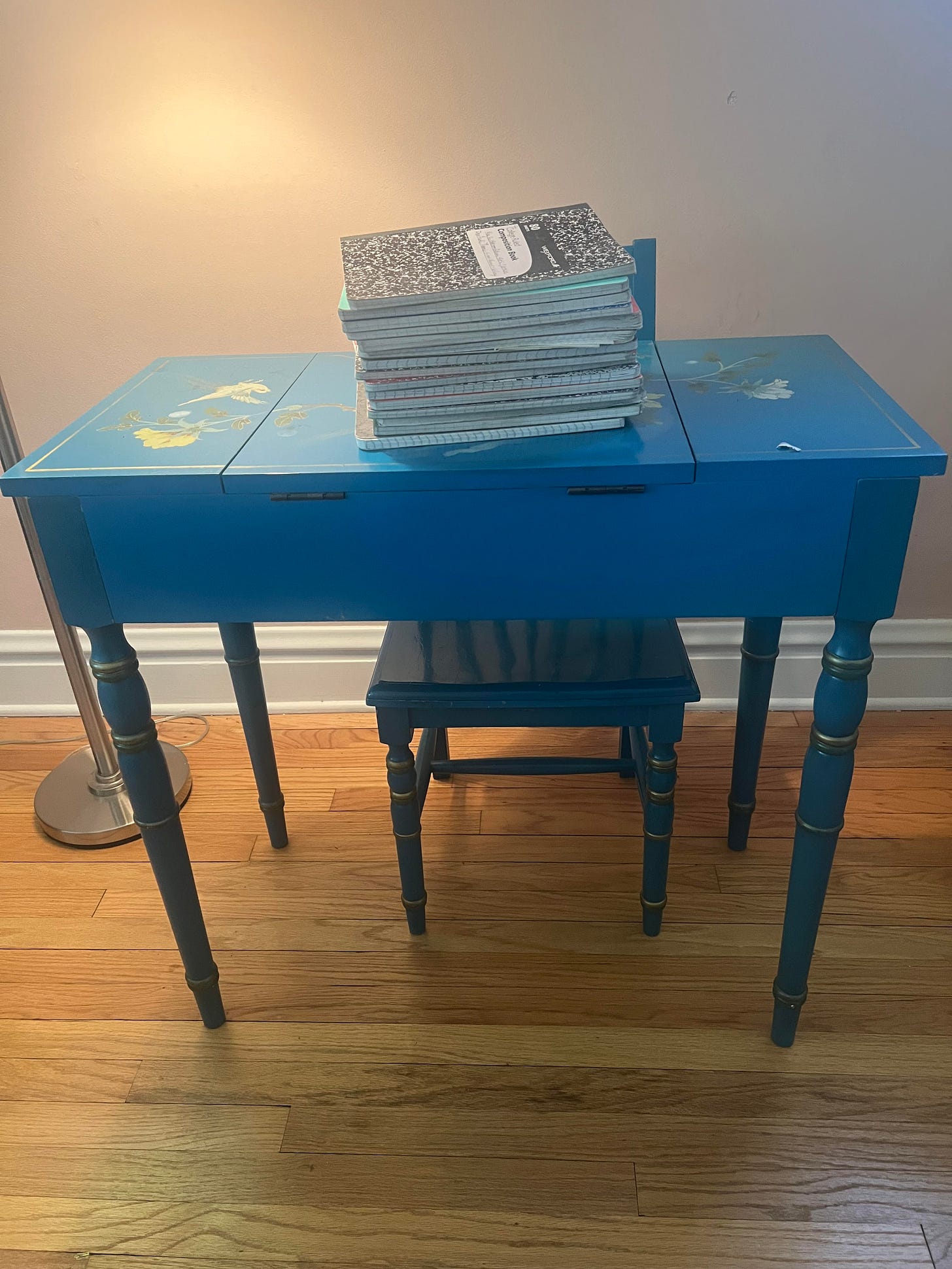"writing essays taught me the page is a space for puzzlement, wonder, and paradox"
Loose of Earth author Kathleen Dorothy Blackburn on following the uncertainty of the essay and focusing on images to interrogate contradictions as she wrote her memoir
Today’s post is in the tending section, which is a mix of essays and interviews about creative practice that do a deeper dive into a particular craft element or process question. Previously in this space we’ve talked about pitching, caring for our attention, and approaches to creative research. Today’s newsletter features Kathleen Dorothy Blackburn, whose memoir Loose of Earth is out now.
I’d love your suggestions of other writers and artists to feature in this series, so feel free to email me with ideas. You can just hit “reply” to this newsletter.
Today’s essay is a guest post by Kathleen Dorothy Blackburn, whose new book Loose of Earth is one of the most skillfully constructed memoirs I’ve read in a long time. In Loose of Earth, Blackburn describes her childhood growing up as the oldest of five in an evangelical family in West Texas and how, when her father was diagnosed with stage IV cancer at 38, “it was like pouring gasoline on the Holy Spirit.” Though her parents were both college-educated and her mother was a veterinarian, they refused medical treatment and turned instead to faith healing, remaining certain right up until her father’s day that a miracle would cure him. (Blackburn’s writing about her mother in particular is a master class in presenting difficult characters in a way that feels both fair and clear-eyed, so if you’re writing hard family stories, I think you’ll really love this book.)
And behind that personal tragedy are issues of environmental justice, including the “forever chemicals” to which her father was exposed when he was an air force pilot. (Blackburn wrote about these “forever chemicals” and the EPA’s recent moves to regulate some of them in a recent New York Times guest essay (that’s a gift link, so you can click through for free.)) As someone who’s obsessed with structure, I was really awed by how Blackburn weaves together those strands. If you’re working on a project that integrates research alongside memoir, I think you’ll find Blackburn’s book an excellent model.
Below, Blackburn talks about how the skills she honed as an essayist came into play working on the memoir, and she provides a really wonderful prompt for integrating reflection and complexity into your writing.
Kathleen, on using reflection to dig into contradictions
In my twenties, I obsessively read literary essays. It was the early 2010’s and I inhaled Brenda Miller’s braided structures, Ryan Van Meter’s second-person point-of-view, Elissa Washuta’s experimental work, Ander Monson’s found-forms, and Maggie Nelson’s white space. My favorite was (and still is) the work of Eula Biss, whose essays exemplified paradox and uncertainty, leading her as often through bewilderment as revelation.
I am not a person of moderation, and I devoted myself wholly to writing essays. The tradition fascinated me. Here was a genre that privileged reflection over persuasion, doubt over thesis, the incomplete over the whole – what Michel de Montaigne described as “disjointed parts,” and Francis Bacon called “knowledge broken.”
As a graduate student in an MFA program, I joined my classmates in experimenting with form. Writing essays was also practical – they are short and conducive to the traditional Iowa-style workshop discussion. When I graduated in 2013, I found myself among a fleet of writers with newly minted MFA degrees all writing literary essays. But I had no idea how to write a book. When I embarked on writing one, I discovered that the uncertainty and incongruity inherent in literary essays were key to writing a memoir, too.

Essays taught me to cull the world of my experiences for an image that was connected to memory and evoked unresolved emotions.
Writing the story of my family’s radicalized belief and my coming of age needed the breadth of book-length project. In 2017, I initiated drafting a memoir – a genre I never imagined engaging with. As a young writer, I had become almost orthodox about my commitment to essays. It was a sign of growth in my craft that I realized the writer should avail themselves of all literary forms.
To start piecing together my memoir, I began with an image. Essays taught me to cull the world of my experiences for an image that was connected to memory and evoked unresolved emotions. For me, that image was a revival tent. The memory attached to it was of my family seated before a traveling evangelist praying that God would miraculously heal my father from cancer. It was important to begin with an image that was endowed with the desperation I felt at the time and the confusion I feel now when looking back.
if Write More has helped you in your creative life, you can click the little ❤️️heart❤️️ at the top or bottom of this post to help other folks find us!
Contradiction drives essays. Likewise, it generates the tension in memoir. My parents both held college degrees in the sciences; my mother was a veterinarian. Yet she and my dad also claimed that supernatural healing was not only possible, but likely. Taking my cues from essays, I heightened the contrasts in my story. I juxtaposed scenes of my mother giving expert care to dogs and cats with memories of her speaking in tongues. I sequenced instances of my father’s deep tenderness with flashes of his temper.
The idea of resolving these paradoxes was intimidating, but the essayist’s tradition of yielding to uncertainty gave me access to the story’s complexity. In my memoir, I used reflection to dig into the contradictions. This was especially key when comparing my past point-of-view with my present. I looked back upon my younger self with curiosity and, at times, bafflement. Rather than produce a convenient take-away, I explored multiple interpretations. The image of the revival tent was meaningful because it evoked my family’s desperation. And because it signified the landscape where my father had been exposed to carcinogenic chemicals his whole life. And because it was tethered to my family’s beliefs and deep love for one another.
The structure of the book was one of the last aspects I finalized. Essays, too, often proceed along the established line of their own logics, revealing their form through the writing process. Similarly, it was by writing the book that I uncovered its structure. I wrote as a kind of waiting for the structure to arrive. Meanwhile, I continued to emphasize complex images. From each image, the memories flowed.
If I had begun my memoir with pressures to produce a complete picture, wise insights, and resolved emotions, I would have run in the other direction. But writing essays taught me the page is a space for puzzlement, wonder, and paradox. Without this understanding, I would have flinched at points in my personal story that were knotted with irresolvable contradictions – the combination of brilliance and fundamentalism in my parents; the ambiguity of science and clarity of religious conviction; the irreconcilability of the past with the present. The brokenness of my own knowing.
I can’t overstate the creative possibility the tenets of the essay offered me as a memoirist. This liberation was what Cynthia Ozick was referring to when she defined the essay as “the movement of a free mind at play.” To this day, each time I read or teach literary essays, it feels like coming home. When I write them, I’m reminded of Ursula Le Guin’s words: It turns out you can come home again, so long as home is a place you’ve never been.
If you’d like to try it out…
We return to some images – as readers, but also as writers – again and again.
What image do you find you can't stop trying to write about? Put differently, what image keeps reminding itself to you? Take a few minutes to write about it again.
If you need a prompt to get started, feel free to draw some inspiration (or directly!) from some of these:
There is no one story that returns to me over and over but there are these recurring images…
Mom always says I….
There’s a memory that keeps me awake at night …
The thing about a story like this is…
Next, give the draft a walk about. A few hours or a few days. Then return to it and introduce some reflection that offers multiple interpretations of the image. The aim is to stage an encounter between the past and present.
Phrases like the following can be helpful.
The version of this story I usually tell is….
For a while now, I’ve told myself that…
At the time when this happened, I thought that…
But as I write this now, I also think….
I like to think that….but in reality….
Every time I hear/tell this story, I say…But there are parts I don’t say, like…
Reflection should lead to heightened contrasts between possible interpretations of the image and attending memories with which you’re working.
Kathleen is the author of the memoir Loose of Earth, (University of Texas Press April 2024). Her writing has appeared in Belt, Guernica, Gulf Coast, Iron Horse Literary Review, River Teeth, and elsewhere. For the last five years, she’s taught creative nonfiction at the University of Chicago and will be joining the English faculty at SUNY New Paltz in fall, 2024. She is married to the writer Michael William Palmer. Together they have a son and a few unruly pets.
You can find her on Instagram or at kdottie.blackburn@gmail.com. Come say hello to her at one of her upcoming events! Details are on her website.
Write More, Be Less Careful is a newsletter about why writing is hard & how to do it anyway. I’m so glad you’re here.
If Write More has helped you in your creative life, I’d love it if you would share it with a friend.









As a budding essayist who sometimes feels a call to eventually write more cohesively about my life’s journey, I appreciated this helpful post so much. Thank you, Kathleen! Loved this line especially: “…writing essays taught me the page is a space for puzzlement, wonder, and paradox.”
I've always loved the essay format for many of the same reasons. You can go so far in a short space